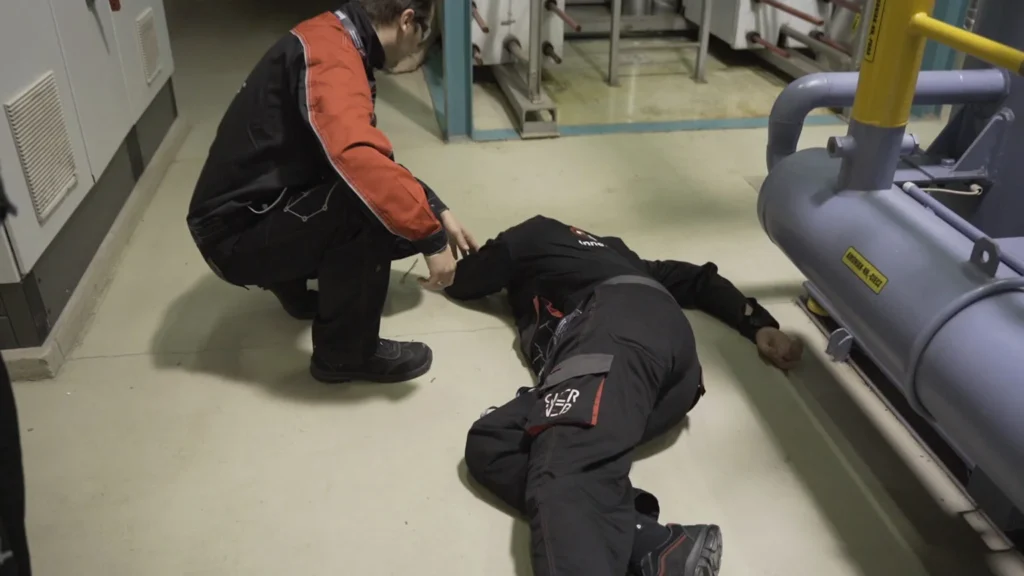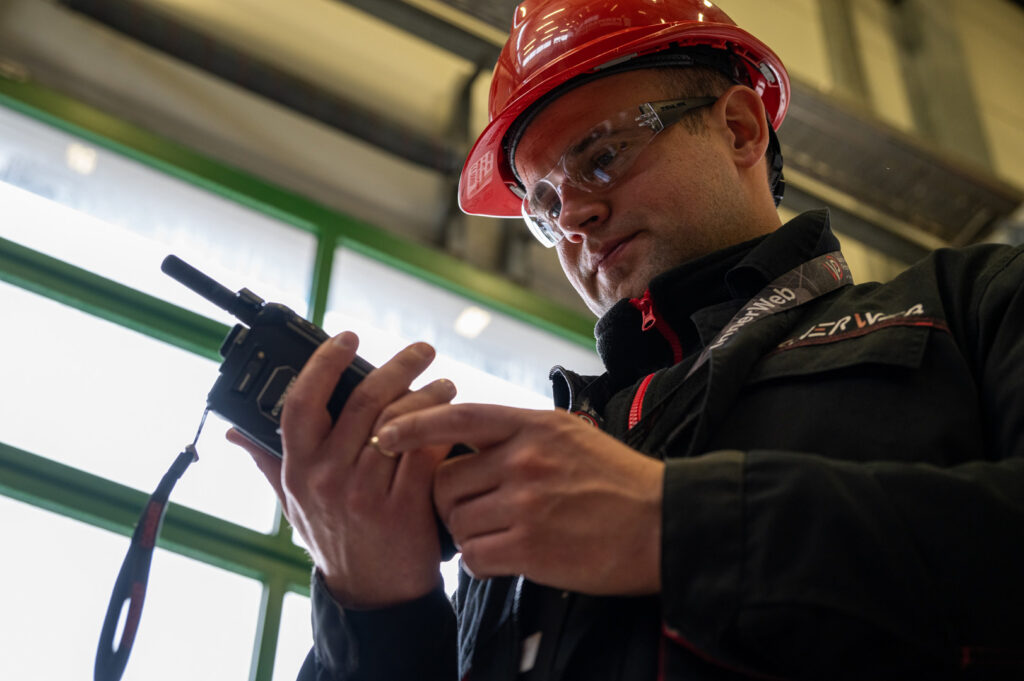Immobility of lone workers
Safety is one of the most essential elements of any workplace. What if an employee falls over, loses consciousness, falls asleep… how quickly will anyone find out about it and react accordingly? How to ensure a high level of safety for employees who are alone at the workstation?
Such workstations are fraught with additional risks, because in a situation of fainting, falling, etc., there are no witnesses or people on site who can quickly provide assistance. The solution to this problem is the immobility detection function, which is based on geolocation.
A safe place to work
Immobility Detection aims to provide employees with the highest level of safety. We want to ensure that employees feel safe in the workplace and return home to their families each day safe and sound. In life or health emergencies, sometimes it is the seconds or minutes that are crucial. If anyone who is present reacts quickly to an accident, the victim’s chances of survival increase. If there is no imminent threat to life, a quick response is able to affect less complications or the degree of permanent damage to health.
Stand-alone positions, where there are no other workers in close proximity, are prone to delayed response in a situation of fainting or an accident. With this in mind, the InnerWeb team has begun developing a system that will improve the safety of people who work without the presence of other employees.

How does it work?
Implementing the service involves installing a network of iBeacons on the premises. Employees must be equipped with smartphones with the InnerWeb app loaded. The system gives us real-time information about where people are on the plant site. The administrator has the ability to activate the Immobility Detection function for selected employees.
This module consists in activating alarms and notifications after detecting immobility in a specific employee. The time after which the alarm should sound is a configurable item. The function is designed to provide a high level of security, especially for those who do the work themselves, in positions without third parties.
For example, we can set the alarm to sound for specific employees automatically after 20 seconds of detecting no movement. If the employee remains at rest for that time, then he will receive a notification that motionlessness has been detected in him. He or she can acknowledge the resting or cancel the alarm.
Confirming immobility triggers static mode, which runs for 15 minutes and stops sending the aforementioned notifications. This can mean taking a break from work or working at the computer. After 15 minutes, the alarm system will start working again, while triggering notifications, appearing after 20 seconds of immobility.
If the employee does not respond to the alarm, the supervisor will be notified of the situation. Then he should behave according to the procedure. What does it consist of? The operation of the alarm system is handled by a security guard, who must contact the employee by phone in the event of an alarm. If he is not available, the security officer should send specific people to the indicated location to verify the threat.
In this way, the team is able to respond quickly in a life- or health-threatening situation, when many times seconds count.

InnerWeb system and monitoring of employee movement on a regular basis
The entire system is based on geolocation of assets, which allows real-time monitoring of employees. As a result, the aforementioned security employee knows exactly where to go.
A proprietary network of iBeacons mounted on the site gives you the ability to monitor employees in various areas. In addition, the location of tools and peripherals can be accessed.
Importantly, employee monitoring ensures smooth evacuation. What does this mean? In the event of an emergency, thanks to current information about the location of people on the premises, we know exactly where the injured are. We know who is left in the building and where to look for them.
Labor Code and employee monitoring
According to the Labor Code, an employee who performs duties alone in areas where there are health or life risks must report to a supervisor. The employer determines how and when to report. Fulfilling this obligation through phone calls or text messages can be cumbersome. It is not only the lone employee who struggles with this duty, but also the supervisor, who receives many such calls and messages every day. The more such lone workers in positions without third parties, the more notifications, calls and the need to check. It is also not difficult to forget to always deliver the message on time, even more so in the busyness of other activities.
One system provides the highest level of security in different areas in the company
InnerWeb’s mission is to provide continuous development in the field of work organization, improve efficiency and increase security. The application facilitates work as well as communication. The described module for detecting lack of movement eliminates the need for constant reporting during the shift. The system provides monitoring of employees, so we have information about where they are at the moment and whether they are on the move or in static work mode. Without the need to make phone calls and send messages, we have a range of information about the progress of work. A possible life or health threatening situation can be detected immediately. At the same time, the response to such incidents is fast.
Benefits of implementing a lone worker immobility detection service
In the era of galloping development of information systems and ubiquitous digitization, we meet the needs. Guaranteeing a secure workplace is a priority. We fulfill this with innovative methods that bring a range of benefits:
- Increase the level of security for lone workers
- Increase the level of safety for workers performing work in inaccessible areas
- Ability to respond immediately when a worker's health or life is threatened
- The ability to replace a two-person team with a system in which the required tasks can be completed by one person.

